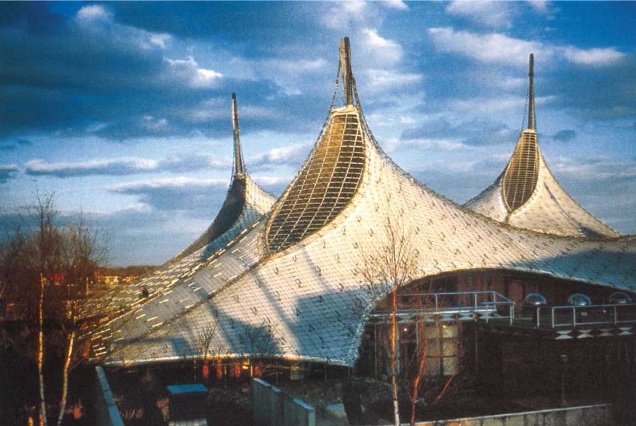algorithmic modeling for Rhino
Hi, first of all awesome release Daniel, thanks for everything :D! Second, hahah seems I am super confused being playing with the soap film but the example you provided does not use the soap film component so I am confuse as of that, made a small version of mine for a tensile structure, manage to get the membrane to stay firm on the edges but can't manage to make the pulling points pull the membrane up or down, as when I introduce the points to the goals the mesh explodes.
I know how to do it on the old release based on the springs formula and I know you told me to use the length with zero length as a test before you release the soap goal, but none of them I have manage to get them to work.
I have also try to use the SoapFilm Example and edited but the membrane dissapears into oblivion once I change something, and well never comes back...
Views: 8723
- Attachments:
Replies to This Discussion
-
Hi Juan,
Are you looking at the file SoapFilm.gh?
The soap film component in this definition is highlighted here:
Note that the mesh must be triangulated, and this element is acting on the 3 corners of each triangle.
(The input to Pts is a tree, containing one branch per face of the mesh, and each of these branches containing 3 items, which are the corner points of that face).
The tangential smoothing component below it is keeping the points well spaced across the surface.
Also be aware - true soap film geometries like this are a lot more restrictive than the kinds of shapes you can make with networks of zero length springs.
For instance, a soap film can never have the kind of sharp points that would result from pulling up single anchor points in the middle of a surface as you had in your definition. In minimal surfaces the 2 principal curvatures must be equal and opposite, and this is impossible at sharp points because towards the point one of these curvatures is going to infinity. The same thing can be observed with soap films in real life.
Related to this - you tend to see some sort of ring or cable around masts in tensile structures, rather than the membrane itself going to a point:
Frei Otto's Montreal Expo 67 structure
However, tensile structures do not need to be minimal surfaces, and indeed most built examples are not pure zero mean curvature. The shapes they permit are often too restrictive, and anyway, having different stresses in warp and weft directions is not generally a problem for fabrics.
The first important thing is to have everywhere negative Gaussian curvature (principal curvatures in opposite directions, though not necessarily equal) - as this does always have to be the case for tensile structures (unless they are inflated). This can be more easily achieved with networks of zero length springs. You should be aware of the ratio of warp/weft stress across your surface, and make sure that this is within what is suitable for the material it will be built with, but it doesn't always have to be 1:1.
I felt it was important for Kangaroo to give the option to generate true minimal surfaces, since there are times when they are useful, and mathematically interesting in their own right, but I wouldn't want people to be restricted by thinking these always have to be used to model fabric structures.
-
-
I understand, will keep on playing with it. and know I see the Soap Film...It was behind another component for some reason on my screen. I will continue to play with it, as Its lots of fun and might help ke in future projects.
-
-
So if I understand correctly something like the Expo 67 would be better made using zero length springs instead of soap component?
-
-
Juan
I your definition just put a mesh component to set your mesh into the soap film example...
it is working ok see the photo...
-
-
Hi Art Agent, If one would like to set up points along the surface to create a pattern, will it be using the grab component? Or where would one attach this points in the definition. To create something like Daniel, Exp Example.
-
-
You can try to bake the mesh, and use the points in Rhino with anchor-points, I used the centenary example with your mesh...than you force the net with the power low component in z direction...
-
-
I see, one last question the Mesh/Corner component where is it found? Have been looking for it but can't find that one component in my gs.
-
-
You must install Kangaroo 0099 it is working with kangaroo2.2 and you find more mesh components. You can al so download weverbird and mesh edit in food for rhino
-
-
Yeah I have all 3 of them, still can't find that component? What is the name I am looking for it as Mesh Corners
-
© 2025 Created by Scott Davidson.
Powered by
![]()
